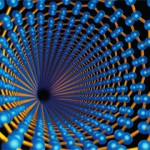“Our data suggest that fiber breakdown during osteoarthritis initially occurs by ‘unbundling’ of prototypic fibrils, suggesting a potential target for therapy,” write the authors.
Lara C. Pullen, PhD, is a medical writer based in the Chicago area.
ad goes here:advert-1
ADVERTISEMENT
SCROLL TO CONTINUE
Reference
- Gottardi R, Hansen U, Raiteri R, et al. Supramolecular organization of collagen fibrils in healthy and osteoarthritic human knee and hip joint cartilage. PLoS One. 2016 Oct 25;11(10):e0163552. doi: 10.1371/journal.pone.0163552. eCollection 2016.

